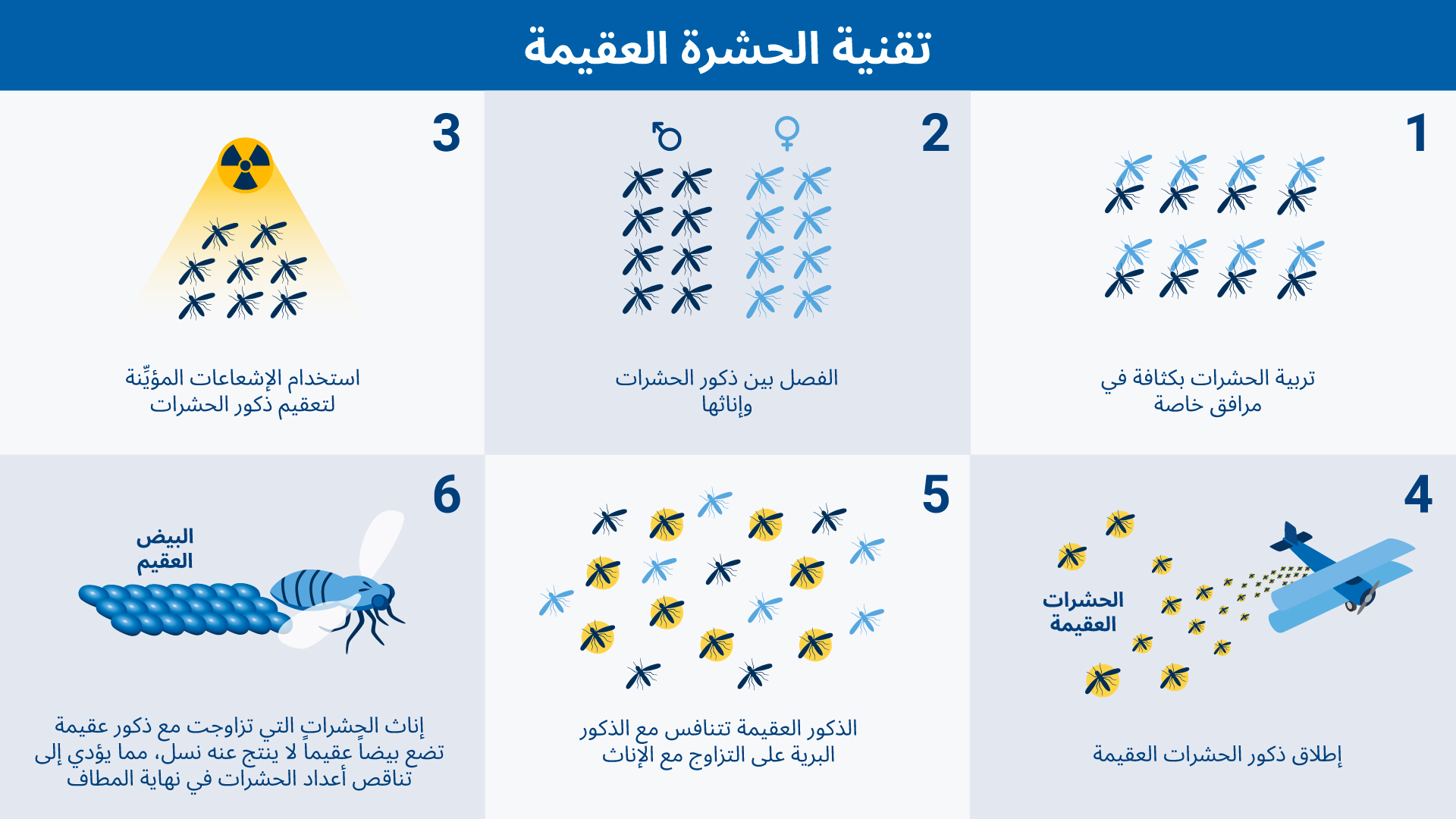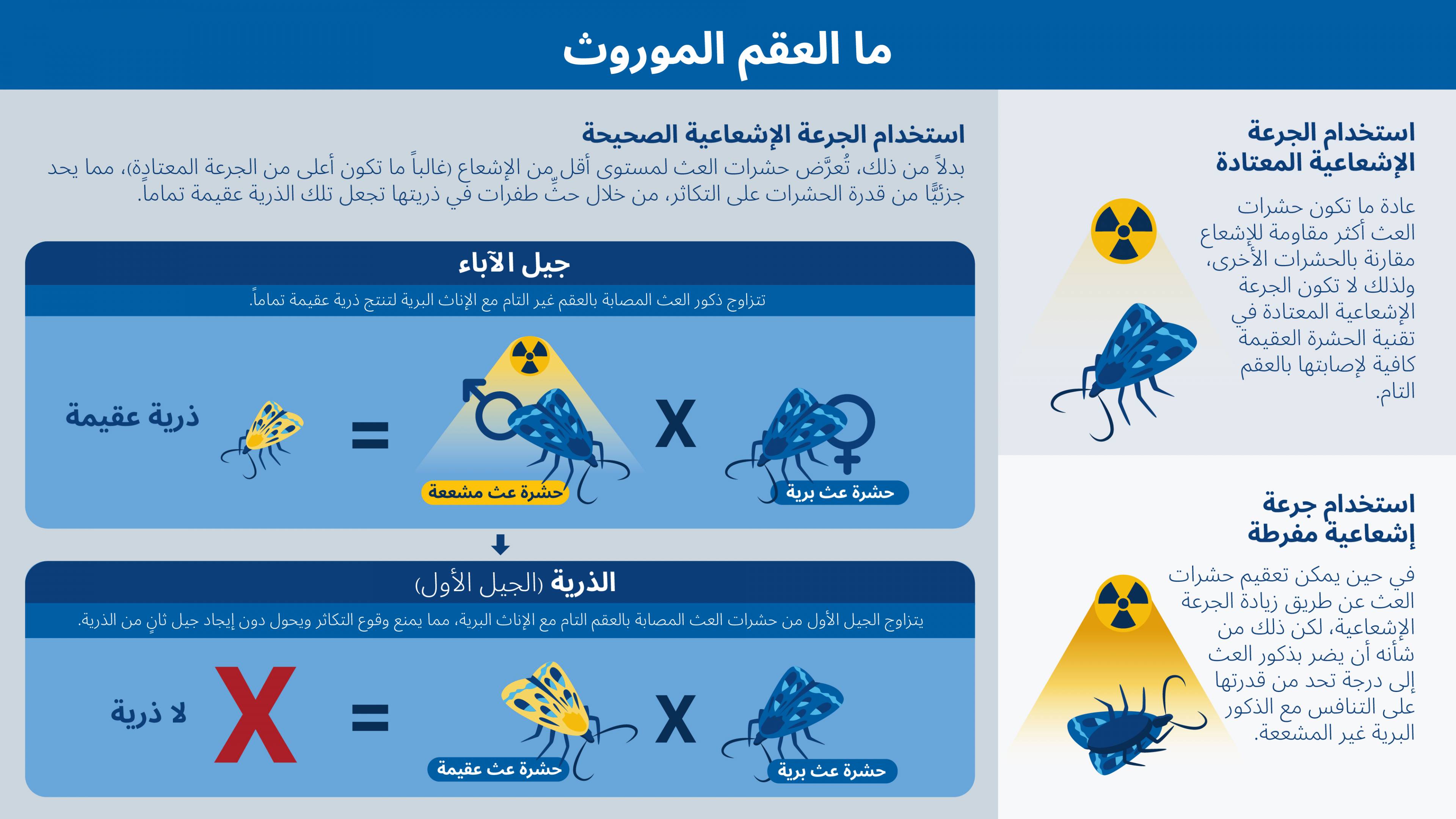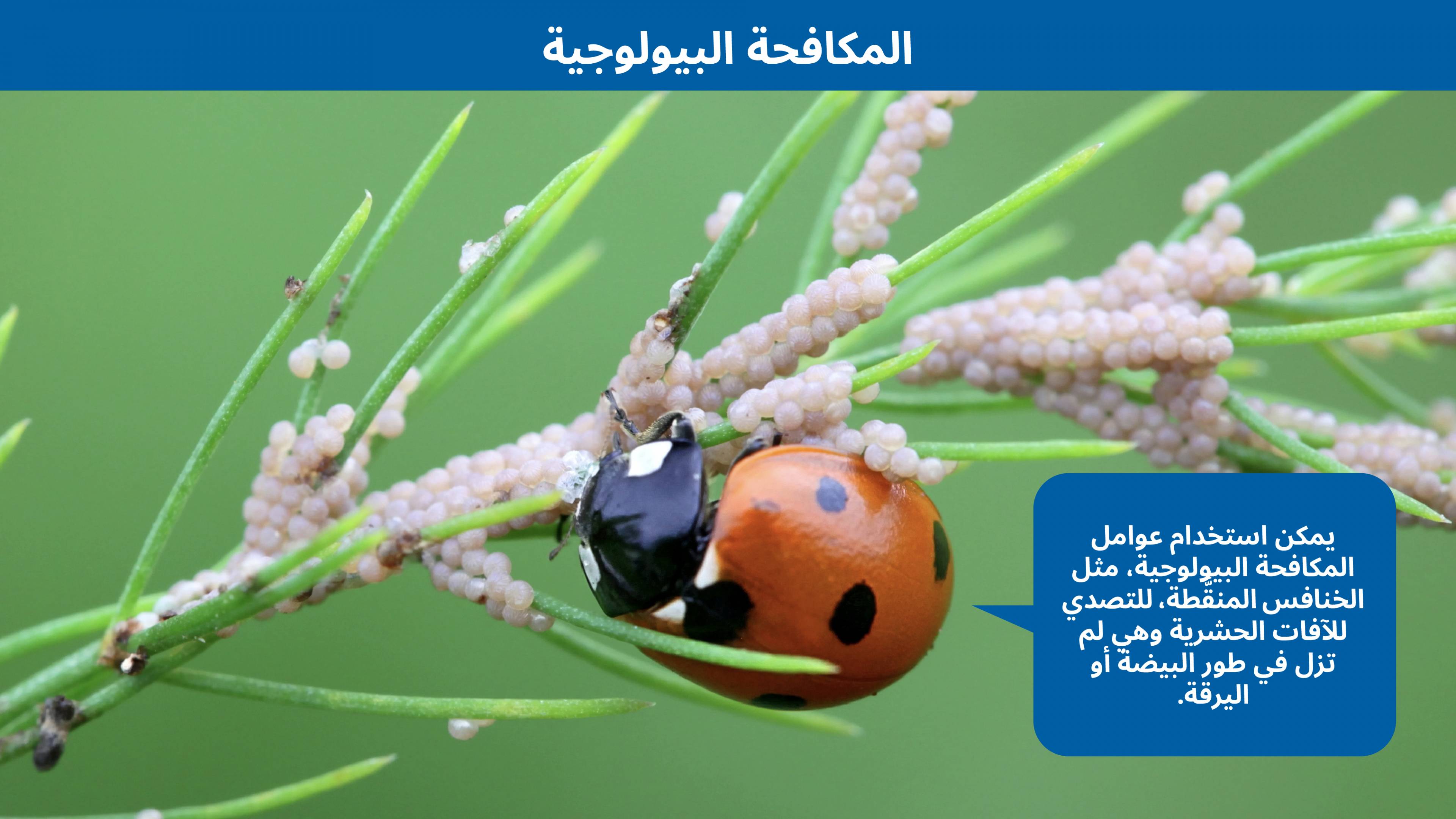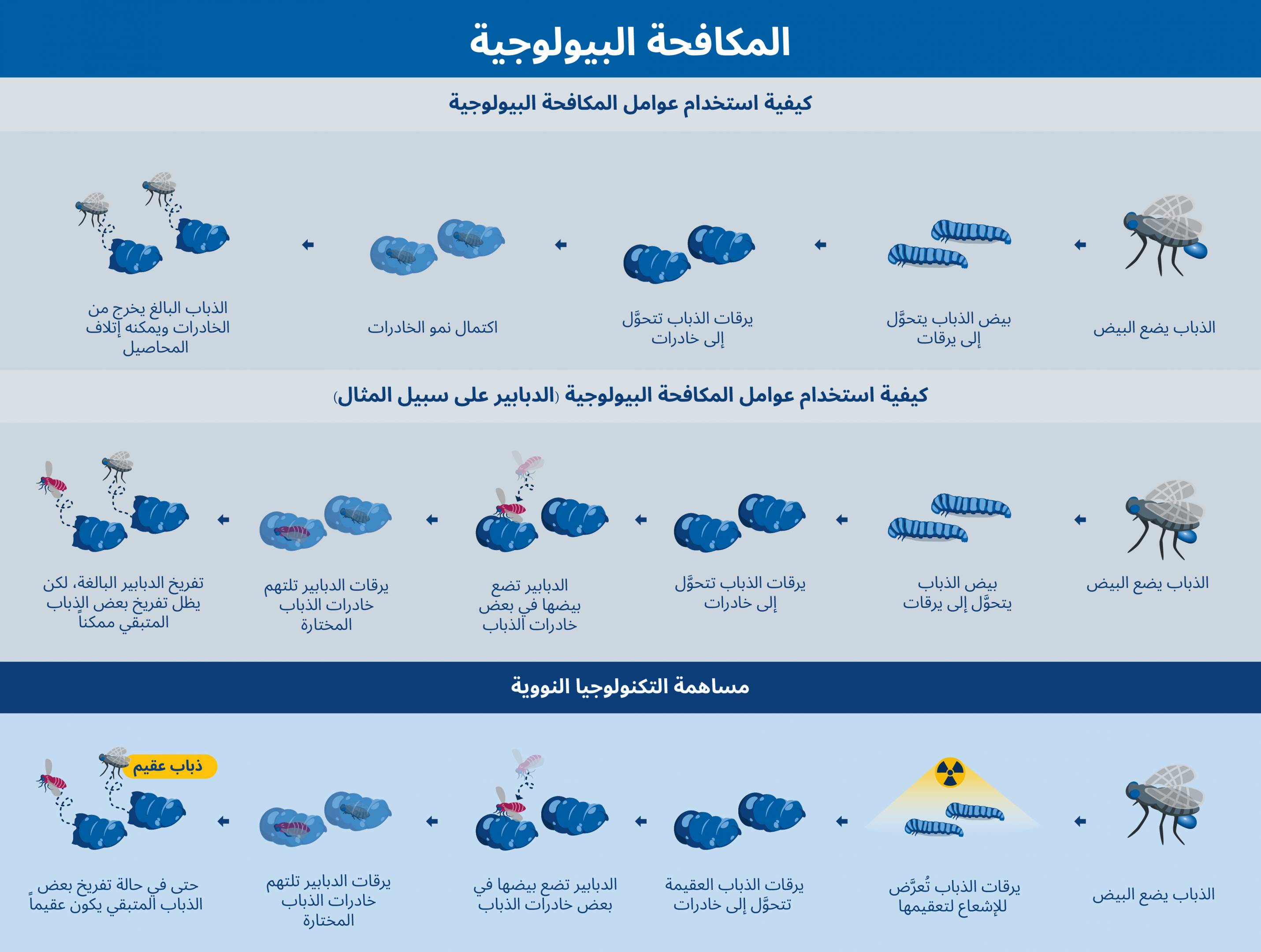والآفات الحشرية الطفيلية، مثل الأنواع الطفيلية من الذباب، يمكن أن تهدِّد نظماً بيئية بأسرها وأن تشكِّل خطراً على إمكانية المحافظة على الحياة الحيوانية والتنوُّع البيئي في الأجل الطويل. أمَّا ذبابة الفاكهة والعثة وذبابة تسي تسي والدودة الحلزونية، فهي أمثلة لآفات حشرية أخرى تتسبَّب في إتلاف المحاصيل والثروة الحيوانية، ومن ثم تهدِّد سبل عيش المزارعين وتضرُّ بالتجارة الدولية وتقوِّض الأمن الغذائي العالمي. ووفقاً للتقديرات الرسمية، فقد تسبَّبت الآفات في إتلاف ما يصل إلى 40 في المائة من المحاصيل على الصعيد العالمي وأدَّت إلى خسائر قدرها 220 مليار دولار في عام 2021.
ويمكن استخدام الإشعاع للمساعدة على التحكُّم في انتشار الآفات أو السيطرة عليها – أو ما يُعرف بمكافحة الآفات – من خلال إتاحة وسيلة فعالة للوقاية من المخاطر التي تشكِّلها الحشرات على الصحة البشرية والحيوانية، وعلى النظم البيئية والأمن الغذائي (بما في ذلك إنتاج المحاصيل والثروة الحيوانية). وتشمل الأساليب المنطوية على استخدام الإشعاع في مكافحة الآفات تقنية الحشرة العقيمة والعقم الموروث والمكافحة البيولوجية.








